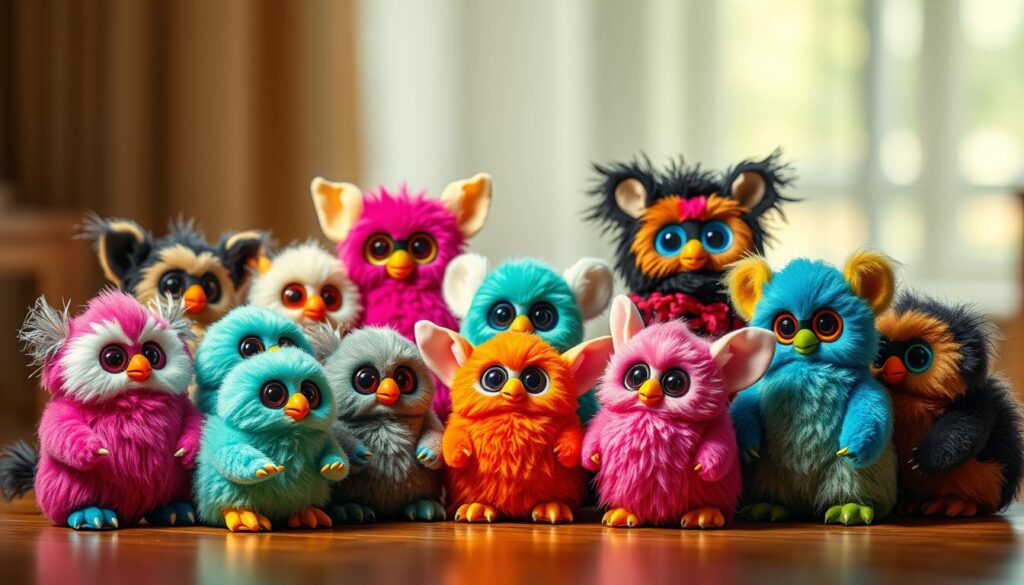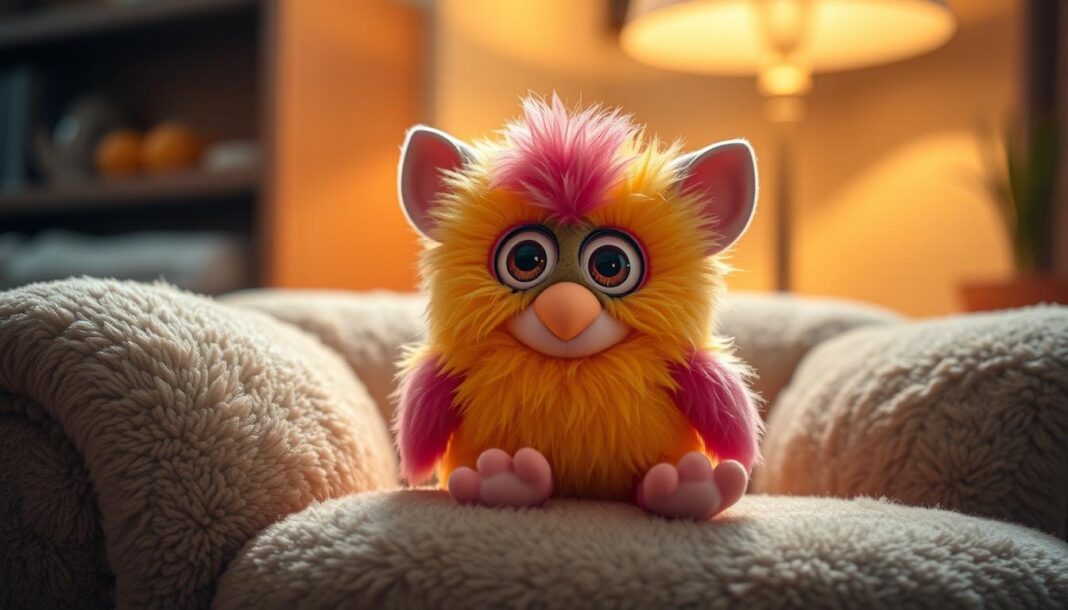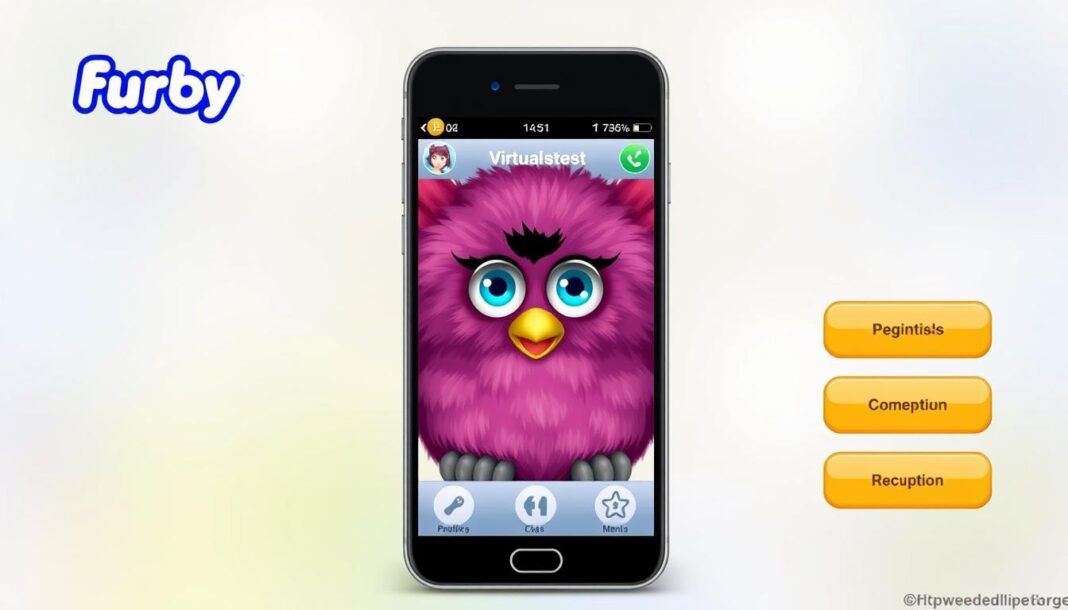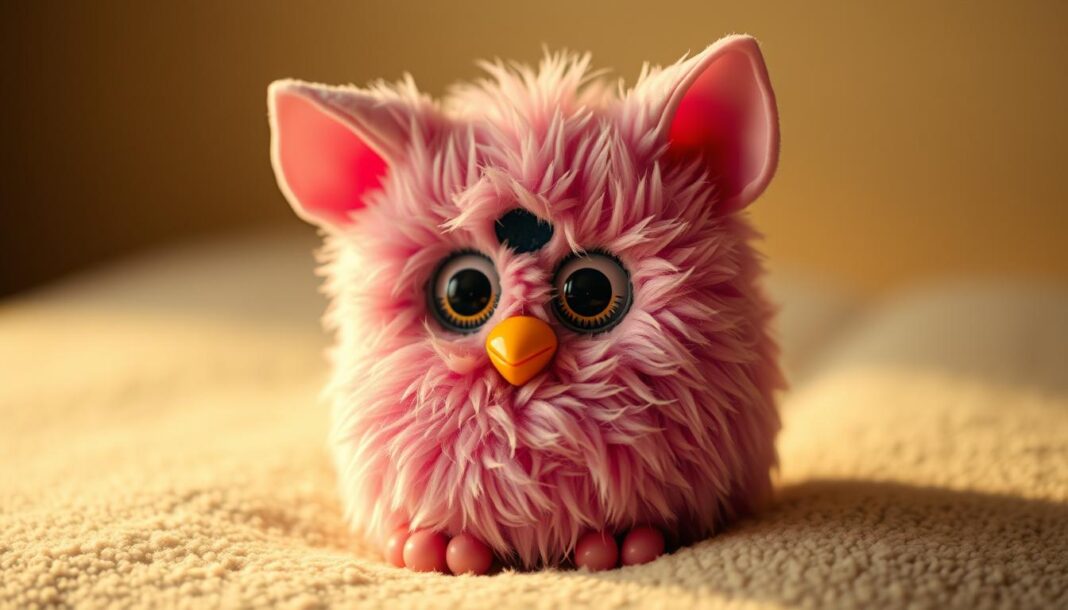For over 25 years, the Furbie has been a beloved companion for families across generations. Since its debut in 1998, this iconic toy has sold over 58 million units worldwide, capturing hearts with its unique charm and interactive features.
The 2023 relaunch takes this classic to new heights. With voice-activated modes, glowing ears, and over 600 responses, the latest model is designed to engage kids in creative, screen-free play. Available in vibrant colors like purple, coral, and limited-edition tie-dye, it’s a perfect blend of fun and functionality.
Parents will appreciate its focus on language development and interactive learning. Plus, the app-free design addresses concerns about screen time, making it a safe and durable choice for modern families. Whether you’re reliving childhood memories or introducing it to a new generation, the Furbie continues to be a trusted companion for all ages.
Learn more about the original electronic companion here.
The History of Furbie: From Inception to Icon
The story of Furbie begins with two creative minds, David Hampton and Caleb Chung, who envisioned a toy that would change the world. Inspired by Asian languages and anthropomorphic design, they developed a concept that combined technology and charm. Their collaboration led to the creation of a toy that would soon become a cultural phenomenon.
The Birth of Furbie: David Hampton and Caleb Chung’s Vision
David Hampton, a Navy veteran, and Caleb Chung, a toy designer, spent nine months perfecting their idea. Using 6502 microprocessor technology, they crafted a toy that could interact with its owner. Their vision was to create a companion that felt alive, blending mechanical innovation with a touch of personality.
Launch and Initial Success: The 1998 Phenomenon
When Furbie was originally released by Tiger Electronics in 1998, it took the world by storm. Priced at $35, it sold 1.8 million units in its first year and 14 million in 1999. The holiday season saw such high demand that resale prices soared to over $300. This frenzy cemented Furbie’s place as a must-have toy.
Revivals and Updates: Keeping Furbie Relevant
Over the years, Furbie has evolved through five generations. The 2005 Emoto-Tronic model introduced voice recognition, while the 2012-2017 versions featured LCD eyes and mobile app integration. Little-known partnerships, like McDonald’s Happy Meal in 2000 and the Star Wars Furbacca variant in 2015, kept the toy in the spotlight.
| Generation | Key Features | Year |
|---|---|---|
| First | Mechanical design, 6502 microprocessor | 1998-2002 |
| Second | Voice recognition (Emoto-Tronic) | 2005-2007 |
| Third | LCD eyes, mobile app integration | 2012-2015 |
| Fourth | Furby Connect, app-connected play | 2016-2017 |
| Fifth | Voice-activated modes, glowing ears | 2023-Present |
For more insights into the evolution of this iconic toy, check out our guide on understanding Furbie.
Types of Furbie: A Look at Different Generations
From its classic design to modern innovations, Furbie has evolved significantly since its debut. Each generation introduced new features, making it a timeless toy for families. Let’s explore the key milestones in its journey.
First Generation (1998-2002): The Classic Furbie
The original Furbie featured a 14-language capability and a unique Furbish learning system. Its mechanical design, powered by a 6502 microprocessor, set the foundation for future models. Early colors included classic shades like black, white, and tan.
Second Generation (2005-2007): Emoto-Tronic Furbies
This generation introduced voice recognition, allowing Furbies to respond to their owners. The Emoto-Tronic models were available in vibrant colors like blue and pink, adding a playful touch to their interactive features.
Third Generation (2012-2015): Furbies with LCD Eyes
Furbies with LCD eyes brought a new level of expressiveness. With 16 color variants, including tangerine-tango and plum, these models were a hit among kids. Their ability to display emotions made them even more engaging.
Fourth Generation (2016–2017): Furbie Connect
The Furby Connect introduced Bluetooth connectivity, enabling custom audio uploads through an app. This feature allowed kids to personalize their Furbies, making them truly unique. However, some app features have since been discontinued.
Fifth Generation (2023-Present): The Latest Innovations
The newest models focus on simplicity and safety. With no internet connectivity and a manual off switch, they prioritize family-friendly play. Available in modern colors like coral and purple, these Furbies continue to captivate new generations.

| Generation | Key Features | Year |
|---|---|---|
| First | 14-language capability, Furbish learning system | 1998-2002 |
| Second | Voice recognition, Emoto-Tronic design | 2005-2007 |
| Third | LCD eyes, 16 color variants | 2012-2015 |
| Fourth | Bluetooth connectivity, app integration | 2016-2017 |
| Fifth | Voice-activated modes, no internet connectivity | 2023-Present |
For a detailed list of Furbies across all generations, check out the official Furbie wiki. If you’re curious about how to manage your Furbie’s settings, our guide on turning off a Furbie properly can help.
Furbie Technology: What Makes It Tick
The technology behind Furbie has always been as fascinating as its personality. From its source code to its interactive features, this iconic toy combines innovation and charm. Let’s dive into the technical marvels that bring Furbie to life.
The Original Furbie Source Code: A Technical Marvel
At the heart of the original Furbie was the 6502 processor, paired with 80KB ROM and 128B RAM. This setup allowed the toy to process commands and interact with its owner. The TSP50C04 chip handled LPC voice synthesis, creating the unique Furbish language that kids loved.
Another key component was the Sunplus SPC81A microcontroller. It managed the progression of Furbish to English, ensuring a seamless learning experience. Despite myths, Furbie doesn’t have an AI learning chip. Instead, it relies on pre-programmed response triggers.
Voice Recognition and Interactive Features
Furbie’s voice recognition capabilities have evolved over the years. Early models used basic sensors to detect sound and touch. Later versions introduced advanced features like LCD eyes and Bluetooth connectivity, making the toy even more engaging.
The 2023 model focuses on simplicity. It uses voice-activated modes and glowing ears to captivate kids. Unlike earlier versions, it doesn’t rely on internet connectivity, ensuring a safer play experience.
Security Concerns and Misconceptions
Furbie has faced its share of security concerns. In 2017, a Bluetooth vulnerability allowed unauthorized audio injection. This issue was quickly addressed, but it highlighted the risks of connected toys.
Another notable event was the NSA ban in 1999. Staff Security Officers were required to report Furbie sightings due to fears of recording capabilities. However, Tiger Electronics demonstrated that Furbie couldn’t record, and the ban was lifted.
| Model | Security Feature | Year |
|---|---|---|
| First Gen | No connectivity, pre-programmed responses | 1998-2002 |
| Fourth Gen | Bluetooth connectivity, app integration | 2016-2017 |
| Fifth Gen | No internet, manual off switch | 2023-Present |
For more insights into Furbie’s journey, check out our article on Furbies: The Electronic Toys That Captivated a.
Furbie’s Cultural Impact: More Than Just a Toy
Furbie has left an indelible mark on pop culture, transcending its role as a toy. From TV shows to movies, it has become a symbol of innovation and nostalgia. Its influence extends beyond playtime, shaping media and even privacy debates.
![]()
From TV to Film: A Star in Its Own Right
Furbie’s appearances in film and television have cemented its place in entertainment history. It’s been featured in popular shows like The Simpsons and Friends, as well as movies like Uncut Gems and Mitchells vs Machines. These cameos highlight its enduring appeal across generations.
In 2016, the Weinstein Company even planned a live-action/animated film centered around Furbie. While the project didn’t materialize, it underscored the toy’s cultural significance.
Collector Craze: Rare Finds and High Values
The collector craze around Furbie is undeniable. Rare prototypes and limited-edition models can fetch over $5,000 at auctions. Collectors treasure these pieces for their uniqueness and historical value.
For example, the 1998 Christmas edition was named the top holiday toy by the Toy Retailers Association. Today, it’s a prized item among enthusiasts, showcasing Furbie’s lasting legacy.
The NSA Ban: A Symbol of Techno-Anxiety
In 1999, Furbie made headlines when the National Security Agency banned it from their facilities. Staff were required to report sightings due to fears of recording capabilities. This national security concern reflected broader anxieties about technology in the 90s.
However, Tiger Electronics demonstrated that Furbie couldn’t record, and the ban was lifted. This incident remains a fascinating chapter in its history. For more details, check out our article on the NSA ban.
Furbie for Families: Why It’s a Beloved Companion
Families have embraced Furbie for its ability to blend play with meaningful interactions. This iconic toy has become a trusted companion, offering both entertainment and developmental benefits. Whether it’s through interactive play or fostering emotional intelligence, Furbie continues to win hearts across generations.
Interactive Play and Learning Opportunities
Furbie’s interactive features make it a standout choice for families. The 2023 model encourages motor skills through actions like petting and feeding. Kids can also enjoy dance parties, fortune-telling games, and even meditation routines. These activities promote creativity and keep children engaged without screens.
According to a 2004 MIT study, child-robot bonding can enhance learning. Furbie’s ability to respond to touch and voice fosters this connection, making it more than just a toy. It’s a partner in exploration and discovery.
Furbie’s Role in Child Development
Furbie supports child development in unique ways. It teaches responsibility through care routines like cleaning its fur and replacing batteries. The toy also helps kids grow emotionally by responding to their actions and expressions.
Compared to the 1998 model, the 2023 version operates more quietly, reducing noise-related stress. This makes it a better fit for modern homes. Parents can feel confident knowing Furbie is designed with their family’s needs in mind.
Choosing the Right Furbie for Your Family
When choosing a Furbie, consider your family’s preferences. Vintage models are ideal for collectors, while the app-free 2023 version is perfect for young kids. Age recommendations have shifted from 5+ in 1998 to 6+ today, reflecting its updated features.
For a deeper dive into Furbie’s evolution, check out our guide on Furby Boom. Whether you’re reliving nostalgia or starting fresh, Furbie remains a timeless choice for families.
Embracing the Furbie Legacy: A Timeless Toy
The Furbie’s journey through tech eras showcases its enduring charm. From its mechanical beginnings to today’s voice-activated models, it has remained a timeless toy that bridges generations. Its ability to adapt to changing trends while retaining its core appeal is a testament to its legacy.
Looking ahead, future innovations could bring AI integration or a return to retro designs. Either way, the Furbie’s role as a cross-generational bonding tool is undeniable. It’s more than a toy—it’s a furry companion that sparks creativity and connection.
For families, choosing a Furbie as a first “smart pet” is a meaningful decision. It encourages interactive play while teaching responsibility. Remember to prioritize battery safety and responsible play to ensure lasting enjoyment.
Discover more about the unique Furbie experience and why it continues to captivate hearts worldwide.


